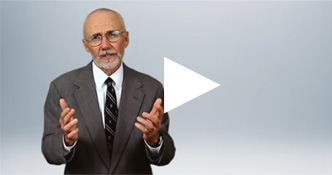Insights from Nonprofit Executives Following a Founder
Stepping into the executive director role following a founder is one of the most difficult leadership transitions we see in nonprofit recruiting. The situation can be challenging for all involved – the new executive, the founder, board, staff, donors and stakeholders. However, with the right support, this critical period can go smoothly and serve as a key milestone as the nonprofit moves beyond a founder-led organization and into the future.
At The Moran Company, our team regularly leads searches involving founders. Several of our consultants – including Ann Graff, Paul Gemeinhardt and Jamie Berry – know firsthand what it takes to succeed in these roles because they served as nonprofit executives after founders. Based on their experiences and responses to our questions, we’ve compiled their helpful insights and advice.
1. What challenges and opportunities came with following a longtime founder?
ANN: It took some time to gain the trust of the board following an ED who had been with the organization for 50 years. They were pretty sure that no one could do as good a job as he had done. Gaining the trust of the staff also took some time.
PAUL: Fundraising was a challenge initially. Some donors were more committed to the founder than to the mission. I quickly had to figure out how to build donor relationships. Then we kept expanding upon that trust and being good stewards of charitable gifts.
Board evolution was both a challenge and an opportunity. I knew we had to have a board that was engaged, who could raise dollars, who could understand finances, etc. As we moved forward, we began to add new board members intentionally. Term limits allowed us to be strategic and look for specific talents.
Staff morale and agency culture was also a big focus. Some staff members had greater loyalty to the founder initially. My approach was to put the mission first. Some staff left, and others rallied. As some left, it became an opportunity to bring in the right individuals to move forward with the mission.
JAMIE: I’ve worked with several founders, and they all had ‘rose-colored’ glasses on when it came to their organization, from how it operated internally to how it was viewed by others. In all cases, their perception was better than actuality. It took a great deal of data gathering and fact-based conversation in order to get them to be more realistic.
Gaining trust quickly was also a challenge. It takes time to establish a good working relationship with a founder and have them understand you also have the organization’s best interests at heart. This likely goes without saying, but patience is a major attribute in founder situations.
The biggest opportunity is a real chance to make a difference. Many founder-based organizations come from a great idea or a real need that could be that much better or have that much more impact if an experienced business leader took the reins.
Another opportunity is self-growth. Working with a founder is very difficult on so many levels. But it also provides you with a great chance to learn how to see situations from multiple perspectives, strategize, use data to support your proposals, develop a strong board, and more.
2. What advice would you give to someone who is preparing to step into the top nonprofit executive role after the founder?
ANN: Learn everything you can from the founder prior to his or her leaving. Pay special attention to the history of the organization. Let them help you understand the culture of the organization and how it has evolved.
PAUL: For the first couple of months, get to know the agency and the staff. Are there any current staff who applied for the leadership position and didn’t get it? Touch base with them and see how they feel about the future and how you’re going to work together. Identify other key staff. Seek their input and recommendations. It helps them become more comfortable with you, and they can see you’re open to ideas.
Get to know the board of directors. Have individual visits with each board member if you can. Get their ideas on what needs to change and what shouldn’t. Through these conversations, they’ll also get to know you more, and the lines of communication will be open. Remember to show curiosity in learning about them beyond their business roles to build a genuine relationship. Having a personal connection keeps them even more committed to the agency.
Connect with donors and key funders. It’s great when you can meet and not ask for money right away. Listen to what they really care about so you can remember this in the future and reach out to them about the right fundraising projects down the road.
JAMIE: In advance of taking the role, find out what’s going to occur with the founder. Will there be overlap? What is the role of the founder? What is the role of the existing board?
After taking the role, do your homework. Find out as much as you can about the organization, how it operates, how it’s perceived in the community. Talk to everyone (staff, clients, board members) and pick their brains. Get data to compare this organization to others.
Find a mentor. If you’ve never done founder work before, know that it takes some special skills and probably a good sounding board. You’ll need someone to express your frustration or feelings to that is not your staff, board or the founder.
3. How can the board of directors support a founder’s leadership transition with its own evolution and incorporation of best practices?
ANN: The board should examine its own level of functioning. This can be done with a survey or a good discussion. With a founding ED, the topic of board training may have been moved to the side. It would be a good idea to go back to the basics with the entire board and make sure that the board understands its roles and responsibilities.
The board should make an effort to meet with the new executive quickly after the transition. It would be a good idea to have individual meetings with each board member. The board chair should pay close attention and meet with the new ED at least monthly during the first year.
Put together a one-year plan with goals and objectives that the board and the ED agree on. This will guide the new executive in what the board’s priorities are. The board should make sure that the goals are realistic and doable during the first year.
PAUL: It’s important to do a board survey. The survey talks about what they see as strengths of the board, plus any improvements needed. What do they feel good about over the past years, what do they think needs improvement, and what are their thoughts and ideas about what the agency could be going forward? Then the executive director has an idea of how and where to lead the board. The board can also see how they can help the executive director move forward with these concepts.
You might also consider having a consultant come in and do an assessment of the board or the agency if needed. This can be more formal, and somewhat intimidating. However, it can be helpful for an unbiased evaluation in certain situations.
Clarify the expectations of what it means to be a board member. (For example, define how they must make a contribution, attend board meetings, etc.) If they meet those expectations, then you have people on the board for the right reasons. They will be in a strong position to help the CEO lead the organization.
JAMIE: My experience with founding boards is that they are very reliant on the founder and sometimes don’t really operate as a board should. They are also sometimes made up of friends and family of the founder vs. experienced professionals who can help the organization operate effectively and safely. Boards should look for ways to educate themselves about organizational capacity and growth, including best practices for each step of evolution. Self-reflection and planning are important components of board development, and term limits are critical.
—
At The Moran Company, we have partnered closely with nonprofits to recruit the right executives to follow their founders. Our team has written a variety of articles on this topic to help boards and search committees prepare for this important step including: “Replacing the Founder – Challenges and Opportunities for Nonprofits” and “How Much Overlap Is Needed in a Nonprofit Leadership Transition“. To discuss your specific situation, contact us for a free 30-minute consultation to learn how our retained executive search services can benefit your organization.
Posted in Executive Search Articles
Subscribe
Join more than 10,000 nonprofit professionals, community leaders and board members who receive e-mail updates from The Moran Company.






